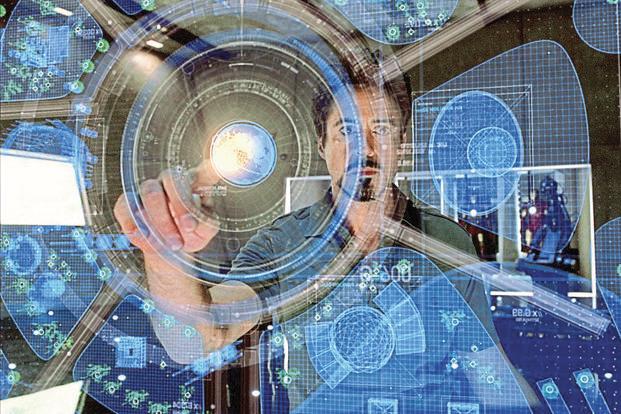Pokémon Go, a free location-based augmented reality (AR) mobile game for iOS and Android smartphone users, has taken both the virtual and real world by storm like no game has ever done before.
The AR game allows players to use GPS (global positioning system) and Google Maps on their smartphones to look for PokeStops at places such as public art installations, historical markers and monuments, where they can collect Poke Balls and other items. And like PokeStops, Gyms can be found at real locations in the world—all this without users needing a virtual reality (VR) headset, which indicates that AR technology is coming of age.
However, within a month of its launch on 6 July, Pokémon Go, which outdid the popularity of Facebook Inc.’s Candy Crush, is also facing a volley of troubles from different quarters. From being a darling of gamers with more than 100 million installs, it is now receiving brickbats, poor reviews for its new release, and even threats of suits from some people on whose properties players have trespassed in search of Pokémon virtual monsters, Stops and Gyms.
Niantic Inc., a spin-off of Google Inc.’s parent Alphabet Inc., developed and published Pokémon Go in partnership with gaming company Nintendo Co. Ltd, (which owns a 32% stake in Niantic) and the Pokémon Co. Pokémon Go is free to download but users have to purchase in-game items to compete. Besides, even brands like McDonald’s have been quick to advertise on the game, helping Niantic increase its valuation.
As with any other game or fad, the craze around Pokémon Go is sure to wane with time, but the fact remains that technology companies like Microsoft Corp., with its HoloLens, and US-based start-up Magic Leap Inc. are increasingly betting on the melding of technologies like AR and VR with the real world to give users and businesses a world of so-called “mixed” reality (MR) or “blended” reality concepts to deal with. The belief is that these technologies have the potential to become the next big computing platform.
While VR is all about a world created solely on computers or online, AR still deals with the real world and has elements of the virtual world built atop it, akin to layers of information. MR, as the name suggests, mixes both realities in a bid to capture the best of both worlds.
For instance, the world’s largest social networking site Facebook and Sony Corp. are betting big on VR. Apple Inc., too, is rumoured to be developing several prototype VR headsets.
All this, even as Google is pushing for AR products with its Tango AR platform, even though it shuttered Google Glass in early 2015. Intel Inc. is reported to be developing its AR smart glasses called Remote EyeSight.
AR technology was envisioned by Ivan Sutherland, who devised the first AR system in 1968, but the technology is blooming only now with customized applications in industrial automation, theme parks, sports television, military displays and online marketing. Jaron Lanier, an American writer, computer scientist and composer of classical music, is credited with popularizing the term AR. He and Thomas G. Zimmerman left gaming firm Atari in 1985 to found VPL Research Inc., the first company to sell VR goggles and gloves.
Nintendo’s Virtual Boy VR device was introduced around 1995 but was discontinued a year later. Amsterdam-based Layar is another company that brings AR to smartphone users. However, a stellar example of a headset-less VR world would undoubtedly be Linden Lab’s Second Life, which was created in 2003 though the company was founded in 1999. It took the technology world by storm but the hype has died since.
So where does the so-called MR concept fit in?
One may recall Tom Cruise encountering interactive billboards and iris-triggered direct marketing in the filmMinority Report, which was released nearly 16 years back. More recently, Tony Stark as the Marvel Comics superhero in the movie Iron Man went a step further with his artificial intelligence partner Jarvis (just a very intelligent system), providing him with all the information he needs on holograms, computers and also in Stark’s Iron Man suits. On 30 June, National Physical Laboratory scientists told The Independent that the new Iron ManAR technology could help surgeons and firefighters too.
Microsoft, which is taking to the cloud in a big way with its Azure platform, already has Kinect—an input device that senses motion and allows users to play games with gestures and spoken commands. It is now betting big on its MR holographic computer which it christened HoloLens. Microsoft believes that “holograms are the next evolution in computing”. The idea as the company puts it on its website is: “Mixed reality blends 3D holographic content into your physical world, giving your holograms real-world context and scale, allowing you to interact with both digital content and the world around you.”
HoloLens has sensors that allow you to use your gaze to move the cursor when you want to select holograms. You can use gestures to open apps, select and size items, and drag and drop holograms, and use voice commands to navigate, select, open, command and control the apps. You can also speak directly to the personal digital assistant Cortana.
This July, during the Worldwide Developer Conference in Toronto, Japan Airlines demonstrated a HoloLens app that lets engineers get up-close with a full-scale, computerized model of a jet engine. The app can highlight engine parts and show how different components work together in a way not possible with a real engine.
Skype for HoloLens lets your contacts see what you see and draw on their screens to place holograms over physical objects in your view.
This month, Microsoft began sales of its HoloLens development kit to developers for $3,000, a move that could significantly expand the community of those building apps for its AR headset. Currently, though, only developers in the US and Canada can buy up to five headsets online through the Microsoft Store.
Devices built on the Windows platform will be interoperable, meaning that someone wearing HTC Vive virtual reality gear would be able to virtually visit and collaborate with someone using HoloLens virtual reality goggles, Microsoft executives told AFP, according to a 1 June report. The list of partners already working with Microsoft included HTC Corp., Lenovo Group Ltd, ASUSTeK Computer Inc., and HP Inc., the report added.
The global AR market in 2014 was valued at $1.72 billion and is expected to touch $56.8 billion by 2020, according to market research firm MarketsandMarkets.
Given that VR, AR and MR are more intuitive ways of interacting with computers, technology companies are hoping these predictions will come true to herald the next big computing platform.

